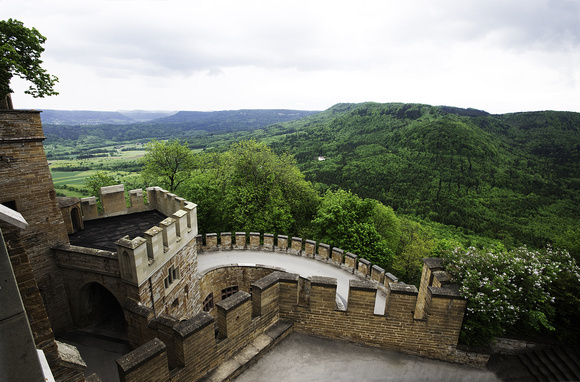Hohenzollern Castle (
German:
Burg Hohenzollern) is a
castle, about 50 kilometers (30 mi) south of
Stuttgart,
Germany, considered home to the
Hohenzollern family that came to power during the
Middle Ages and ruled
Prussia and
Brandenburg until the end of
World War I.
The castle is located on top of Mount Hohenzollern at an elevation of 855 meters (2,805 ft), above
Hechingen and nearby Bisingen, both located at the foothills of the
Swabian Alb. It was originally constructed in the first part of the 11th century. It was completely destroyed after a 10-month siege in 1423 by the
imperial cities of
Swabia.
A second, larger and sturdier castle was constructed from 1454 to 1461 and served as a refuge for the Swabian
Hohenzollern family during wartime, including during the
Thirty Years' War. By the end of the 18th century, however, the castle was thought to have lost its strategic importance and gradually fell into disrepair, leading to the demolition of several dilapidated buildings. Today, only the chapel remains from the medieval castle.
The third version of the castle, which stands today, was constructed by
King Friedrich Wilhelm IV between 1846 and 1867, under the direction of Oberhofbaurat
Stühler, who based his design on
English Neo-Gothic style as well as the castles in
Loire.
[1] Because the castle was built to be merely a family memorial, no member of the Hohenzollern family took residence in this third castle until 1945, when it became home to the last
Prussian Crown Prince Wilhelm; he and his wife,
Crown Princess Cecilie, are buried there.
Among the historical artifacts of Prussian history contained in the castle today are the
Crown of Wilhelm II and some of the personal effects of
Frederick the Great and a letter from US President
George Washington thanking
Baron von Steuben, a scion of the House of Hohenzollern, for his service in the
American Revolutionary War. The castle is today a popular tourist destination.


